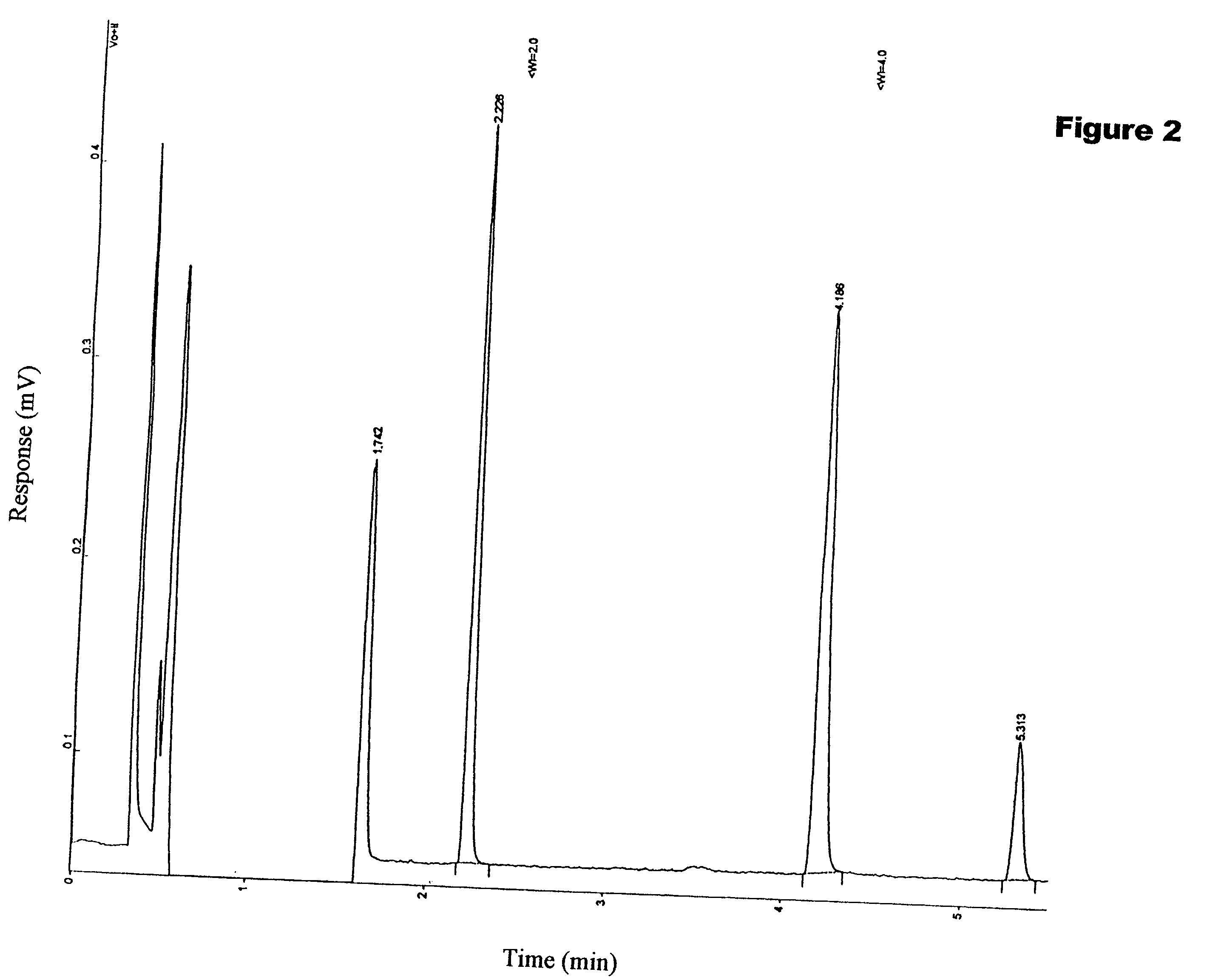Molecular sieve adsorbent-catalyst for sulfur compound contaminated gas and liquid streams and process for its use
a technology of adsorbent and sulfur compound, which is applied in the direction of physical/chemical process catalysts, other chemical processes, separation processes, etc., can solve the problems of damage to technological equipment and transportation systems, gas and liquids containing even a very small amount of sulfur compounds, and strong and troublesome odor of organic sulfur compounds, etc., to achieve enhanced adsorption capacity, high removal capacity, and increase the effect of adsorption capacity
- Summary
- Abstract
- Description
- Claims
- Application Information
AI Technical Summary
Benefits of technology
Problems solved by technology
Method used
Image
Examples
example 2
[0053] Mn--54%; Na--39%; K--6; Ca--1 % (equiv.);
[0054] Example 3: Cd--53%; Na--46%; K--1; Ca--0 % (equiv.).
examples 4 and 5
(According to the Invention)
[0055] 200g of a NaKLSF molecular sieve beads with a silica / alumina ratio 2.02 were treated at room temperature with 2 L of a 1N solution of calcium chloride for over 3 hours. 100 g of the resulting material were treated with 1 L of a 1N solution of zinc chloride (Example 4) as described in Example 1. Another 100 g of Ca-exchanged LSF material were treated with 1 L of 1N solution of copper chloride. The operating procedures of Examples 1-3 for bead washing, drying, and calcining were repeated. The cation composition of the adsorbent samples produced was:
[0056] Example 4: Zn--66%; Ca--28%; Na--5; K--1 % (equiv.);
[0057] Example 5: Cu--53%; Ca--31%; Na--19; K--7 % (equiv.).
example 6
(Adsorption Equilibrium Test)
[0058] The samples of Examples 1 through 5 were tested for butyl and ethyl mercaptans adsorption equilibrium for toluene and n-pentane solutions respectively. To compare the products of the invention with conventional products, conventional adsorbents, such as molecular sieves 5A of Zeochem, manufactured under registered trademark Z5-02; 13X adsorbents (U.S. Pat. No. 4,098,684) of UOP, manufactured as 13X HP product; and NaLSF adsorbents of Zeochem, manufactured as Z10-10 product were utilized. Mercaptan adsorption of the respective adsorbents was measured employing the following methodology:
[0059] 0.1-1.0 g of the adsorbent was placed in a glass container with 100-500 ml of the stock solution. The stock solution of mercaptans in hydrocarbons with concentration of 50 ppm were prepared employing Hamilton micro syringes and a measuring flask dilution method. The mixture was maintained at ambient temperature for 2-3 days with intermittent shaking for 3-4 ho...
PUM
| Property | Measurement | Unit |
|---|---|---|
| molar ratio | aaaaa | aaaaa |
| temperature | aaaaa | aaaaa |
| linear velocities | aaaaa | aaaaa |
Abstract
Description
Claims
Application Information
 Login to View More
Login to View More - R&D
- Intellectual Property
- Life Sciences
- Materials
- Tech Scout
- Unparalleled Data Quality
- Higher Quality Content
- 60% Fewer Hallucinations
Browse by: Latest US Patents, China's latest patents, Technical Efficacy Thesaurus, Application Domain, Technology Topic, Popular Technical Reports.
© 2025 PatSnap. All rights reserved.Legal|Privacy policy|Modern Slavery Act Transparency Statement|Sitemap|About US| Contact US: help@patsnap.com


